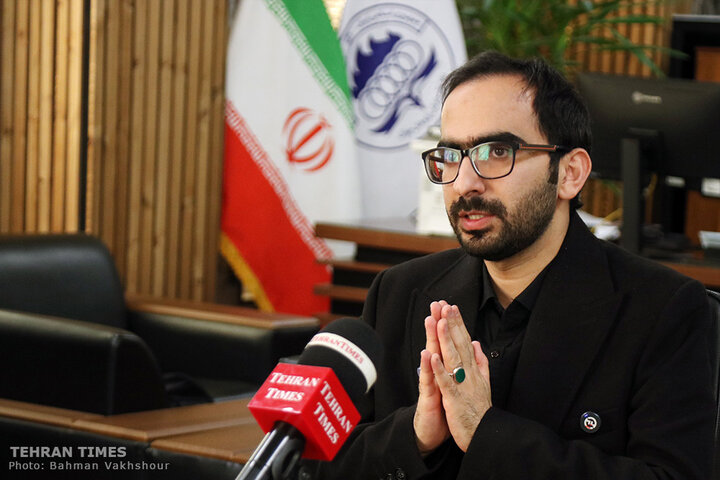-
 2025-11-25 21:57
2025-11-25 21:57
By staff writer
The protected criminal syndicate
How long can Israel evade international scrutiny with Western support?
TEHRAN – The Thirtieth Session of the Conference of the States Parties to the Chemical Weapons Convention (CSP30), which opened on November 24, is meant to symbolize international cooperation against the scourge of chemical weapons. Delegates gather to reaffirm collective responsibility, transparency, and the shared determination to prevent the horrors of WMD use.
-
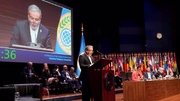
Israel’s non-adherence to CWC threatens regional stability: FM Araghchi
TEHRAN – Iranian Foreign Minister Abbas Araghchi on Tuesday condemned Israel for remaining outside chemical weapons disarmament treaties, calling it the main obstacle to regional stability.
-

Iranian Navy to unveil new equipment in coming days: Navy commander
TEHRAN – The commander of the Naval Force of the Iranian Army says new equipment will be unveiled and join the Army’s naval fleet in the coming days.
-

Serbia’s MFA rejects 'fabricated narratives' of ‘human safaris’ in Sarajevo siege
Serbia’s Ministry of Foreign Affairs issued a statement on November 20, rejecting recent foreign media reports alleging President Aleksandar Vucic’s involvement in wartime events in Bosnia. The ministry described the claims, including references to “human safaris” during the Sarajevo siege, as unfounded and stressed that no tribunal has ever linked Vucic to war crimes. The following is the full statement as published by the ministry:
-
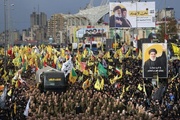
By Sondoss Al Asaad
Hezbollah reshaping the battlefield before the fight
SOUTH LEBANON—Hezbollah has never fought from a position of conventional parity. It has always confronted an enemy with overwhelming technological capacity, vast intelligence resources, and near-limitless Western backing. Yet history established a stubborn truth: despite asymmetry, the Zionist enemy failed repeatedly to convert its intelligence superiority into decisive victory or reoccupation.
-
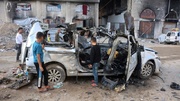
By Wesam Bahrani
Gaza strangled despite “truce deal”
TEHRAN – Despite Trump’s much?touted Gaza truce announced on October 10, Israel continues to restrict essential lifelines for Palestinians in Gaza. The occupying Israeli regime’s continued airstrikes, bombardment, and tightening blockade are deepening a humanitarian collapse across the Gaza Strip, where survival is becoming increasingly untenable despite the declared truce.
Politics
-

Press TV launches Hebrew-language service
TEHRAN – Iran’s Press TV has officially launched its Hebrew-language service to reach a wider audience worldwide.
-

Pakistan pledges diplomatic backing for Iran during top security official’s visit to Islamabad
TEHRAN – Pakistan’s President Asif Ali Zardari, in a meeting with Ali Larijani, Secretary of Iran’s Supreme National Security Council, reaffirmed his country’s solidarity with the Islamic Republic of Iran against the aggression of the Israeli regime.
-

IRGC forces bust terror group in southeast Iran
TEHRAN – Iran’s Islamic Revolution Guards Corps (IRGC) says it has dismantled a terrorist team in the southeastern Iranian province of Sistan and Baluchestan.
Sports
-

Iran beat Panama at 2025 Futsal Women’s World Cup
TEHRAN - Iran bounced back into contention at the FIFA Futsal Women’s World Cup Philippines 2025 after securing a 6-2 win against Panama on Wednesday.
-

Iran held by Lebanon in AFC U17 Asian Cup 2026 Qualifiers
TEHRAN - Lebanon fought back to secure a 1-1 draw with Iran in their AFC U17 Asian Cup Saudi Arabia 2026 Qualifiers Group D tie on Wednesday.
-

Teams discover fate at Iran’s Hazfi Cup Round of 16
TEHRAN – The Iranian football teams learned their opponents in the 2025-26 Iran’s Hazfi Cup Round of 16.
Culture
-

19th Cinema Verite reveals line-up for Gaza Competition section
TEHRAN – The 19th Iran International Documentary Film Festival “Cinema Verite” has announced the line-up for the Gaza Competition section.
-

New cultural facilities to open on Iran’s strategic islands, enhancing youth engagement
TEHRAN- Two new cultural and artistic centers along with a cinema hall of Iran's Institute for Intellectual Development of Children and Young Adults – Kanoon are set to open simultaneously on November 30, coinciding with the Persian Gulf Trio Islands National Day.
-

Iranian short film “Sheep” wins at Asian World Film Festival
TEHRAN – Iranian short film “Sheep,” written, directed, and produced by Hadi Babaeifar, won a prize at the 11th annual Asian World Film Festival (AWFF), which was held in California, the U.S.
Economy
-

Iran, Turkey emphasize expansion of trade ties
TEHRAN- Iran’s minister of industry, mining, and trade, during a meeting with the minister of trade of turkey, emphasized the need to remove obstacles to the development of Tehran-Ankara economic cooperation and announced a $2 billion increase in the value of trade exchanges next year, reaching a total of $10 billion in trade between the two countries.
-

Cuban president invites Iranian food brands to Cuban chain stores
TEHRAN- During a visit to Iran's pavilion at the Havana International Fair (FIHAV 2025), the president of Cuba invited Iranian food industry brands to enter Cuban chain stores.
-
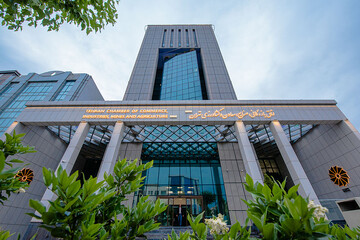
Private sector ready to play a more active role in Iran-China commercial co-op: TCCIMA head
TEHRAN- Mahmoud Najafi Arab, the Head of the Tehran Chamber of Commerce, Industries, Mines, and Agriculture (TCCIMA), in a letter to Abbas Araghchi, the Minister of Foreign Affairs, while presenting a report on the achievements of the Tehran Chamber's delegation's visit to the Shanghai exhibition in China and the side meetings of this delegation, declared readiness to play an active role in organizing and facilitating the relations between the private sectors of the two countries.
Society
-

DOE announces new phase of wetlands conservation project
TEHRAN – The Department of Environment (DOE) has announced the beginning of a new phase of the wetlands conservation project (2025 –2028) to strengthen sustainable livelihoods and alleviate pressure on the wetlands ecosystem.
-

Tehran, Baku agree to deepen counter-narcotics co-op
TEHEAN – Iran’s anti-narcotics police chief, Iraj Kakavand, and Azerbaijan’s Interior Minister, Vilayat Suleyman oglu Eyvazov, have agreed to promote collaborations in the fight against narcotics.
-
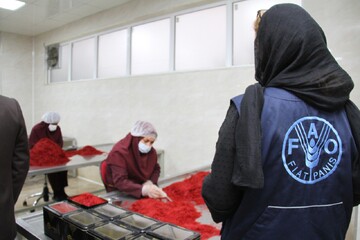
FAO, Iran take new step toward innovation and quality integrity in saffron value chain
TEHRAN - The Food and Agriculture Organization of the United Nations (FAO), in collaboration with the Ministry of Agriculture-Jahad (MAJ) and the Iranian Society for Horticultural Sciences (IrSHS), held a National Workshop on Saffron Quality Integrity and Value Chain Development.
Tourism
-

Isfahan opens intl. tourism exhibition, officials say event marks new phase in sector
TEHRAN – Officials in Iran’s central province of Isfahan said on Tuesday that the 15th Isfahan International Exhibition of Tourism, Handicrafts and Hoteling would help launch a new phase in the region’s tourism development.
-
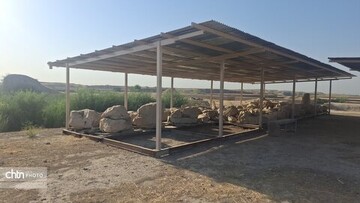
UNESCO-listed Susa completes protection work on 253 Apadana Palace remains
TEHRAN – Conservation teams in the UNESCO-registered Susa have completed a project to safeguard and protect 253 architectural remains from the Achaemenid-era Apadana Palace, the head of the Susa World Heritage base said on Tuesday.
-

National Museum to host conference on human living spaces
TEHRAN – The National Museum of Iran is scheduled to hold a national conference on human living spaces on Feb. 15, 2026.
International
-

The protected criminal syndicate
TEHRAN – The Thirtieth Session of the Conference of the States Parties to the Chemical Weapons Convention (CSP30), which opened on November 24, is meant to symbolize international cooperation against the scourge of chemical weapons. Delegates gather to reaffirm collective responsibility, transparency, and the shared determination to prevent the horrors of WMD use.
-

Serbia’s MFA rejects 'fabricated narratives' of ‘human safaris’ in Sarajevo siege
Serbia’s Ministry of Foreign Affairs issued a statement on November 20, rejecting recent foreign media reports alleging President Aleksandar Vucic’s involvement in wartime events in Bosnia. The ministry described the claims, including references to “human safaris” during the Sarajevo siege, as unfounded and stressed that no tribunal has ever linked Vucic to war crimes. The following is the full statement as published by the ministry:
-

Hezbollah reshaping the battlefield before the fight
SOUTH LEBANON—Hezbollah has never fought from a position of conventional parity. It has always confronted an enemy with overwhelming technological capacity, vast intelligence resources, and near-limitless Western backing. Yet history established a stubborn truth: despite asymmetry, the Zionist enemy failed repeatedly to convert its intelligence superiority into decisive victory or reoccupation.
Video Comment
-

Academics analyze social dimensions of Resistance in Tehran conference
-

Culture minister highlights year of progress in arts, global image enhancement
-

Gazan Journalists attacked by Israel
-

Brother of Iranian scientist murdered in Israeli strike speaks out
-
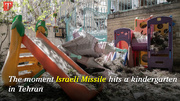
Footage shows Israel hit a kindergarten in Tehran
Most Viewed
-
Iran says no option but to ‘confront’ Israel after attack on Beirut
-
Iran, Pakistan move to fast-track free trade agreement
-
Iran in Pot 2 for 2026 FIFA World Cup draw
-
Truce as trap
-
As US looks to limit Iran’s missile program, commander assures industry 'unshakable'
-
Hezbollah reshaping the battlefield before the fight
-
Iranian Navy to unveil new equipment in coming days: Navy commander
-
The protected criminal syndicate
-
The real Iran vs. the Iran of Western imagination
-
Neighbors continue high-level exchanges as Larijani heads to ‘brotherly’ Pakistan
-
X tool reveals Israeli infiltration of U.S. digital infrastructure
-
Iran’s foreign minister to hold talks in Paris on Wednesday
-
Who was Martyr Haitham Al-Tabtabai?
-
Football matches in Tehran cancelled due to air pollution
-
Pakistan pledges diplomatic backing for Iran during top security official’s visit to Islamabad
